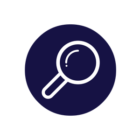Over the last six months, Enterprise Knowledge (EK) has been in the midst of taking the best of what we know and applying it to our own website. Though we’ve helped an array of Federal Agencies, Fortune 500 Companies, and other global organizations strategize, design, and implement their own websites, knowledge bases, and information systems, EK’s own site still appeared as though it was designed at my kitchen table (which it was).
Like many organizations with whom we work, we found that our site organization, performance, and interface were becoming impediments to the deep and rich content we were sharing on our site. To that end, we brought our own team together to redesign our site in a way that would serve as a case study. Our new site bridges the gap between Content and Knowledge Management. It offers “traditional” website content and functionality, but also incorporates a knowledge base of EK’s experience and expertise.
We’re proud of what we’ve designed, not least of which because it demonstrates that we also practice the very same recommendations and guidance we offer to our clients. This site shows who EK is, what we do, and why we do it. It is also a key tool to help us realize one of our guiding principles, to be thought leaders, sharing our knowledge and expertise with the industry as a whole.
The following are the best practices for website and knowledge base design that resulted in the site you’re currently experiencing.
Go Agile, Really
 One of EK’s core services is Agile Transformation & Facilitation, so it’s no surprise we begin here. Though Agile concepts are most commonly associated with software development, they are equally, if not more applicable and valuable in regards to knowledge management and information management design. Projects such as these require maximum touch points between the design and development team, the business users, and the end users.
One of EK’s core services is Agile Transformation & Facilitation, so it’s no surprise we begin here. Though Agile concepts are most commonly associated with software development, they are equally, if not more applicable and valuable in regards to knowledge management and information management design. Projects such as these require maximum touch points between the design and development team, the business users, and the end users.
As consultants, we’ve often heard some version of the phrase, “I don’t know what I want, but I’ll know when I see it.” Our Agile approach to design enables this concept. Without it, you run the risk of straying toward the dreaded “big bang” deployment that results in missed expectations, missed deadlines, and unhappy stakeholders.
We ran our entire initiative, from initial goal setting and understanding of our users, through testing and content population, leveraging the same true Agile approach we apply to our customers. As a result, we were able to engage our end users, react to surprises, and adjust to the changing views that are inherent in such an effort.
Content is Still King
 You’d think that after a couple decades with the “Content is King” phrase beaten to death, organizations would recognize that content is, in fact, pretty important. For our own initiative, we decided at the outset that every hour dedicated to the design or development of the site should be matched with two hours dedicated to the creation, curation, and enhancement of content within it.
You’d think that after a couple decades with the “Content is King” phrase beaten to death, organizations would recognize that content is, in fact, pretty important. For our own initiative, we decided at the outset that every hour dedicated to the design or development of the site should be matched with two hours dedicated to the creation, curation, and enhancement of content within it.
In advance of our new site, we focused on 1) Enhancing existing content, 2) Creating new content, 3) Maximizing our social media engagement to drive new traffic. Of these three components, by far the most important was enhancing the existing content. Any time a site goes through a migration or upgrade, there will be some level of chaos. We always recommend harnessing that chaos and piggybacking on top of it, in order to ensure the existing content is the best it can be.
This content enhancement included a copy edit of all existing content, a thorough weeding of that which wasn’t up to our standards, and a review of existing naming, placement, tagging, and imagery. For the imagery, we took advantage of the effort to dial up and standardize the style and quality of our graphics. We also assessed all of our content tagging to ensure consistency and findability (more on that below).
Coupled with this effort, we developed a new web style guide for our site so that voicing, capitalization, and other similar efforts (oxford comma, spaces after periods, etc.) would be consistent moving forward.
Taxonomy, Faceting, and Overall Findability
 One of the first features we knew we wanted to include in our site was a faceted browse/search feature for our knowledge base. Having worked with hundreds of organizations to arrive at highly impactful taxonomy design, we wanted to ensure we had our own “demonstration” of this increasingly critical site feature.
One of the first features we knew we wanted to include in our site was a faceted browse/search feature for our knowledge base. Having worked with hundreds of organizations to arrive at highly impactful taxonomy design, we wanted to ensure we had our own “demonstration” of this increasingly critical site feature.
As we would’ve done for any customer, we ran internal taxonomy design workshops to identify and prioritize our most important metadata fields and then define values for each. We settled on Topic, Document Type, and Author as EK’s three key fields, and supplemented this with a broader set of defined keywords to be applied as metadata for search engine optimization and increased categorization and search efficacy.
User Interface Doesn’t Just Mean Flash
 We leveraged our standard design methodology in order to progress the look and feel and navigational elements of the site. We defined user personas, prioritized them, created user journeys, and then user stories for each. Months before development began, we ran team workshops to progress our site design from rough concepts to high fidelity wireframes. We wanted a site that was visually compelling, for sure, but more importantly we wanted a site that would allow our users to complete their missions, while experiencing EK’s unique “personality.”
We leveraged our standard design methodology in order to progress the look and feel and navigational elements of the site. We defined user personas, prioritized them, created user journeys, and then user stories for each. Months before development began, we ran team workshops to progress our site design from rough concepts to high fidelity wireframes. We wanted a site that was visually compelling, for sure, but more importantly we wanted a site that would allow our users to complete their missions, while experiencing EK’s unique “personality.”
One of the most important elements of us, for this, was to ensure the site was rich with photos of the team, our space, and our work products. Together with our rich content, this tells the story of EK.
We also focused designing a site that would work across a range of devices. Though our design was “desktop first,” the mobile interface, leveraging a completely responsive design, provides all the same functionality and feel in easy to digest components.
Open Source, in the Cloud
 Though we do an equal amount of work leveraging commercial-off-the-shelf (COTS) products, we made an early decision to leverage Open Source Content Management for our solution. We progressed this decision leveraging our standard process, selecting and prioritizing system functionality and features at a high level, then iterating in increasing detail until we had a clear set of functional stories of what we needed to be able to do with the site.
Though we do an equal amount of work leveraging commercial-off-the-shelf (COTS) products, we made an early decision to leverage Open Source Content Management for our solution. We progressed this decision leveraging our standard process, selecting and prioritizing system functionality and features at a high level, then iterating in increasing detail until we had a clear set of functional stories of what we needed to be able to do with the site.
Just as we do with our clients, we evaluated a range of potential options, including Drupal, Alfresco, and WordPress. We settled on WordPress for the site as it provided all the necessary capabilities with the lowest administrative burden.
Our site is deployed in the cloud. After all, EK does a lot, but we’re not a hosting shop and we don’t want to dilute our focus by trying to be one.
The product of our efforts is our new website. We accompanied its creation with the development of a content governance plan and fresh editorial calendar, focused on ensuring the site and its contents evolve toward the better moving forward. We hope you visit often, as we’re committed to continuing our thought leadership and keeping the content fresh. If you’re thinking about a site redesign or refresh of your own, we’re here to help.
